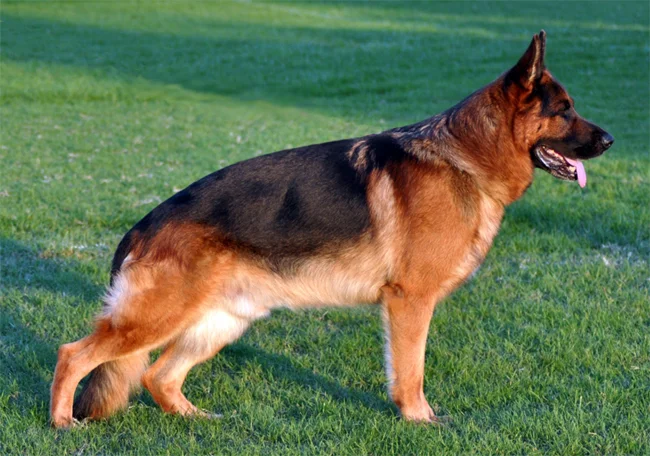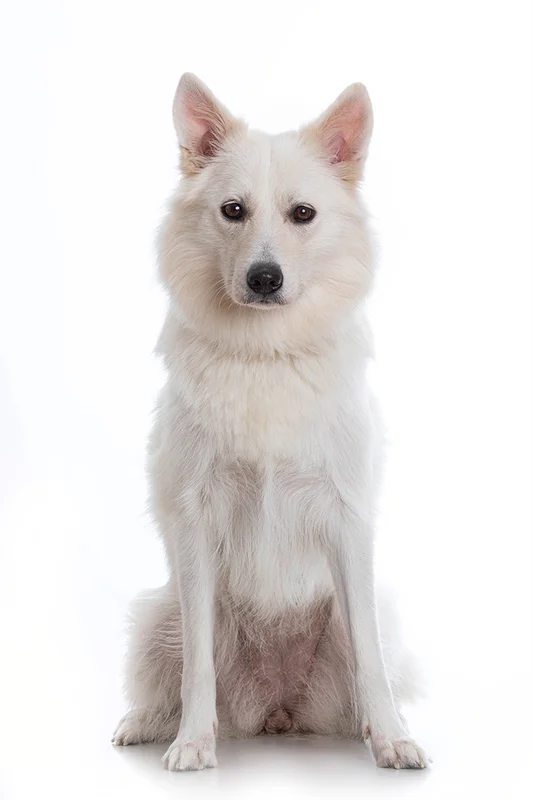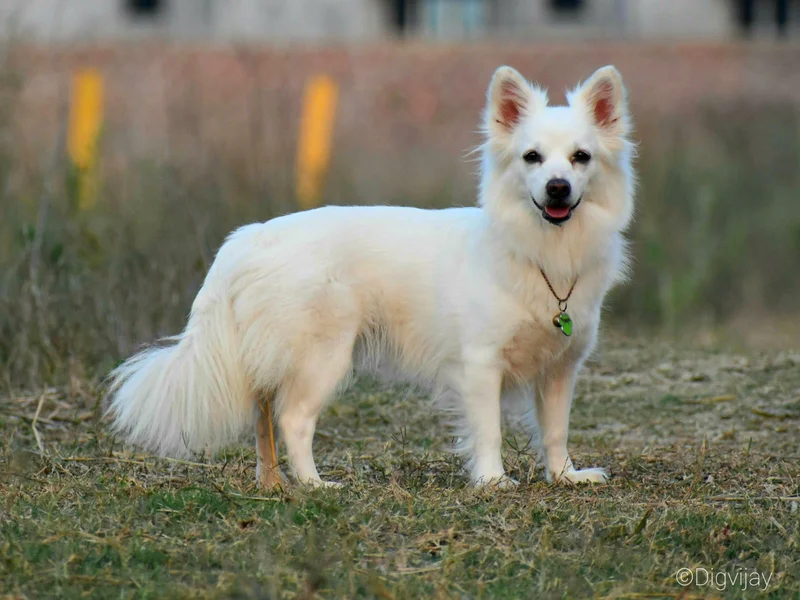St. John's Water Dog
The St. John's Water Dog, an ancestor of modern retrievers, was a loyal and intelligent breed known for its swimming abilities and strong work ethic. Though extinct, its legacy lives on in today's retriever breeds.
Overview
🐕Breed Overview
✨Key Traits
💡What Makes St. John's Water Dog Special
The St. John's Water Dog is characterized by its strong swimming ability and endurance, traits that were essential for its historical role as a working dog.
They possess a playful and energetic spirit, often enjoying games of fetch and swimming. Their intelligence allows them to learn commands quickly, and they respond well to positive reinforcement training methods.
Additionally, their affectionate nature makes them excellent companions, as they thrive on human interaction and enjoy being part of family activities. These dogs are also known for their adaptability, fitting well into various living situations as long as their exercise needs are met.
The St. John's Water Dog, also known as the St. John's Dog or Lesser Newfoundland, is a historical breed that played a vital role in the fishing communities of Newfoundland.
This medium-sized, strong, and stocky dog was known for its exceptional swimming abilities and endurance, making it an invaluable companion for fishermen. With a short, thick coat and characteristic white markings, the St. John's Water Dog resembled modern English Labradors more than their American counterparts.
Despite its extinction in the early 1980s, this breed's legacy lives on through its descendants, including popular retrievers like the Labrador and Golden Retrievers. The St. John's Water Dog was not only a working dog but also a beloved companion, known for its intelligence and loyalty.
Their playful and affectionate nature made them excellent family pets, while their strong work ethic ensured they thrived in active households. Although they are no longer around, the St. John's Water Dog's contributions to canine history and its influence on modern breeds are significant.
Potential owners of retriever breeds can appreciate the traits inherited from this remarkable dog, which continues to be celebrated in the canine world today.
🎉Fun Facts
Despite being extinct, their legacy continues in the form of Labrador Retrievers and Golden Retrievers.
The St. John's Water Dog was known for its exceptional swimming abilities, often retrieving fish for fishermen.
They were integral to the development of modern retriever breeds, influencing their traits and characteristics.
Breed Characteristics
Family & Friends
Good Behavior
Get Up & Go
Household Harmony
Temperament & Personality
✨Key Traits
🐕Core Temperament
The St. John's Water Dog is known for its friendly and sociable temperament. They are generally good-natured and get along well with children and other pets.
Their playful and energetic nature makes them great companions for active families. While they are intelligent and eager to please, they can also exhibit a stubborn streak, requiring consistent training and socialization. These dogs are loyal and protective of their families, making them excellent watchdogs.
Their calm demeanor allows them to adapt well to various living situations, and they thrive in environments where they can engage in physical activities.
💫Personality Profile
The St. John's Water Dog is known for its friendly and affectionate nature. These dogs are highly intelligent and eager to please, making them relatively easy to train.
They are playful and energetic, enjoying activities that involve water and retrieving. Their loyalty to their families is unwavering, and they often form strong bonds with their human companions. While they are generally good with children and other pets, early socialization is important to ensure they develop into well-mannered adults.
Their calm demeanor makes them suitable for family life, and they thrive in active households where they can engage in various activities.
🔊Vocal Tendencies
The St. John's Water Dog has a moderate barking tendency.
They may bark to alert their owners of strangers or when they are excited, but they are not known to be excessive barkers. Their vocalizations can vary depending on the situation, such as barking during play or when they want attention.
Overall, they are relatively quiet dogs, making them suitable for families and urban living.
Affection & Social Traits
Energy & Activity
Communication Style
Care Requirements
🏃♂️Exercise Requirements
Daily Exercise
The St. John's Water Dog was known for its high energy levels and love for swimming, making regular exercise essential for its physical and mental well-being.
Ideally, these dogs require at least 60 minutes of vigorous exercise daily, which can include activities such as swimming, running, fetching, and engaging in dog sports. Given their historical role as working dogs for fishermen, they thrive in environments where they can swim and retrieve.
Puppies should have shorter, more frequent play sessions to avoid overexertion, while adult dogs benefit from a mix of high-intensity activities and moderate walks. Insufficient exercise can lead to behavioral issues such as boredom, anxiety, and destructive tendencies, so it's crucial for owners to provide ample opportunities for physical activity.
Preferred Activities
🏠Living & Adaptability
Space Requirements
St. John's Water Dogs are medium-sized and require adequate space to thrive.
They adapt well to various living environments, including homes with large yards or rural settings. However, they can also live in apartments if provided with sufficient daily exercise and mental stimulation.
Owners in smaller spaces should ensure regular outings to parks or open areas where the dog can run and play. The breed's energetic nature means that a lack of space can lead to restlessness and potential behavioral issues, so it's important to create an engaging environment for them.
Climate Preference
🍲Feeding Guide
Schedule
Food Types
Portion Size
Special Nutritional Needs
St. John's Water Dogs require a balanced diet rich in protein to support their active lifestyle.
It's important to choose high-quality dog food that meets their nutritional needs, particularly during their growth stages. Owners should monitor for any food sensitivities and adjust their diet accordingly.
Regular veterinary check-ups can help ensure that their dietary needs are being met.
✨Grooming Requirements
Grooming Overview
The St. John's Water Dog has a short, thick coat that requires regular grooming to keep it healthy and free of mats.
Weekly brushing is recommended to remove loose hair and prevent tangles, especially during shedding seasons. Bathing should be done as needed, typically every few months or when the dog gets particularly dirty.
Owners should also pay attention to the dog's ears, cleaning them regularly to prevent infections, and trim nails as necessary to keep them at a comfortable length. Overall, grooming is moderate in terms of time and effort, making it manageable for most owners.
Care Schedule
Brush weekly, bathe as needed (every few months), trim nails every 2-4 weeks.
Health Profile
⚕️Health Care
Regular health care is vital for the longevity of the St. John's Water Dog.
Routine veterinary check-ups, vaccinations, and preventive treatments can help detect and address health issues early. Owners should also be proactive in monitoring their dog's health, including weight management and dental care.
Early detection of health problems can lead to more effective treatment and improved quality of life throughout the dog's lifespan.
Health Issues Overview
⏳Average Lifespan
Genetic Factors
Genetics significantly influence the lifespan of the St. John's Water Dog, particularly concerning hereditary health issues.
Responsible breeding practices that prioritize genetic diversity can help mitigate the risk of inherited conditions. Potential owners should seek reputable breeders who conduct health screenings for common breed-specific issues.
Understanding the genetic background of a dog can provide insights into potential health risks and help owners make informed decisions regarding their care.
Living Conditions
The lifespan of the St. John's Water Dog can be influenced by various environmental factors, including housing conditions, climate, and social interactions.
Dogs living in stable, loving homes with regular exercise and mental stimulation tend to live longer, healthier lives. A balanced diet and routine veterinary care also play crucial roles in promoting longevity.
Additionally, exposure to extreme weather conditions can impact their health; therefore, providing a comfortable living environment is essential. Social interactions with humans and other pets can enhance their emotional well-being, contributing positively to their overall lifespan.
🏥Common Health Issues
Hip Dysplasia
Warning Signs
🔬Diagnosis
X-ray examination by a veterinarian.
💊Treatment
Weight management, pain relief medications, and in severe cases, surgery.
📝Management Tips
Maintain a healthy weight, provide joint supplements, and engage in low-impact exercise.
Elbow Dysplasia
Warning Signs
🔬Diagnosis
Veterinary examination and X-rays.
💊Treatment
Pain management, physical therapy, or surgery.
📝Management Tips
Regular vet check-ups, controlled exercise, and maintaining a healthy weight.
Cystinuria
Warning Signs
🔬Diagnosis
Urinalysis and urine culture.
💊Treatment
Dietary changes and medications to manage symptoms.
📝Management Tips
Regular vet visits, proper hydration, and dietary adjustments.
Subvalvular Aortic Stenosis (SAS)
Warning Signs
🔬Diagnosis
Echocardiogram performed by a veterinarian.
💊Treatment
Medications to manage symptoms and improve heart function.
📝Management Tips
Regular veterinary check-ups and monitoring for symptoms.
Arthritis
Warning Signs
🔬Diagnosis
Veterinary examination and X-rays.
💊Treatment
Pain relief medications and physical therapy.
📝Management Tips
Weight management, joint supplements, and controlled exercise.
🛡️Preventive Care
🔬Hip Evaluation
Hip Evaluation assesses the dog's hip joints for dysplasia and other abnormalities.
📅 Annually after 2 years of age.
🔬Elbow Evaluation
Elbow Evaluation checks for dysplasia and other elbow joint issues.
📅 Annually after 2 years of age.
🔬Cardiac Evaluation
Cardiac Evaluation screens for heart conditions, particularly Subvalvular Aortic Stenosis.
📅 Every 2 years after 2 years of age.
🔬Urinalysis
Urinalysis checks for Cystinuria and other urinary tract issues.
📅 Annually after 2 years of age.
🔬Thyroid Testing
Thyroid Testing screens for hypothyroidism and other thyroid-related issues.
📅 Every 2 years after 2 years of age.
Training
🧠Intelligence & Trainability
💪Work Drive
St. John's Water Dogs have a strong work drive, stemming from their historical role as working dogs.
They require mental stimulation and tasks to keep them engaged and happy. Activities such as retrieving games, agility courses, and water sports can fulfill their need for work.
Without adequate mental and physical challenges, they may become bored and exhibit destructive behaviors. Owners should aim to provide a variety of stimulating activities to keep their dogs mentally sharp and physically fit.
⚠️Training Considerations
Training a St. John's Water Dog can present challenges due to their independent nature and strong instincts.
They may exhibit stubbornness or distraction during training sessions, particularly if they are not sufficiently motivated. To overcome these challenges, owners should employ positive reinforcement techniques, using treats and praise to encourage desired behaviors.
Consistency and patience are key, as these dogs respond best to structured training routines. Socialization from a young age is also important to help them develop good manners and reduce any potential behavioral issues around other dogs and people.
📝Training Tips
Training a St. John's Water Dog requires a firm yet gentle approach. Start with basic obedience commands and gradually introduce more complex tasks.
Incorporate plenty of physical activity into training sessions to keep them engaged, as they thrive on exercise. Using water-related activities, such as retrieving toys from a pool or lake, can enhance their training experience and tap into their natural instincts. Regular socialization with other dogs and people is essential to ensure they grow into well-rounded adults.
Owners should also consider enrolling in obedience classes to provide additional structure and guidance.
History & Heritage
📜Origin Story
The St. John's Water Dog originated in Newfoundland, where it was developed by fishermen who needed a reliable companion to assist them in their work.
These dogs were known for their exceptional swimming abilities and strong work ethic, often accompanying fishermen on boats to retrieve nets and catch. The breed's genetic makeup is a mystery, but it is believed to have included a mix of Old English, Irish, and Portuguese dogs, reflecting the diverse influences of the fishermen who settled in Newfoundland.
As the fishing industry evolved and the demand for these dogs decreased, so did their population, leading to their eventual extinction in the 1980s. Despite this, their legacy lives on in the retriever breeds that descended from them, showcasing their historical significance in canine development.
⏳Development History
The St. John's Water Dog developed in Newfoundland, likely from a mix of Old English, Irish, and Portuguese working dogs.
Its history is intertwined with the fishing industry, where these dogs were valued for their swimming ability and endurance. By the 19th century, they were exported to England, where they were crossbred with other breeds to create modern retrievers.
Unfortunately, the breed began to decline in the early 20th century due to restrictions on dog ownership and the impact of World War I and II, leading to its extinction by the early 1980s.
🛡️Purpose & Historical Role
The St. John's Water Dog was primarily bred for its working abilities, particularly in retrieving fish and assisting fishermen.
This breed played a crucial role in the fishing industry, demonstrating remarkable endurance and swimming skills. Its contributions to the development of modern retrievers highlight its importance in canine history, as it helped shape the characteristics of breeds that are now popular for hunting and companionship.
🏺Cultural Significance
The St. John's Water Dog holds a significant place in the history of dog breeds, particularly as the ancestor of modern retrievers such as the Labrador Retriever, Golden Retriever, and Chesapeake Bay Retriever.
This breed was integral to the fishing communities of Newfoundland, aiding fishermen in retrieving nets and lines from the water. Its legacy continues to influence the characteristics of many contemporary breeds, showcasing its importance in the development of working dogs.
Conservation Status
This breed is extinct and no longer exists in its original form.









